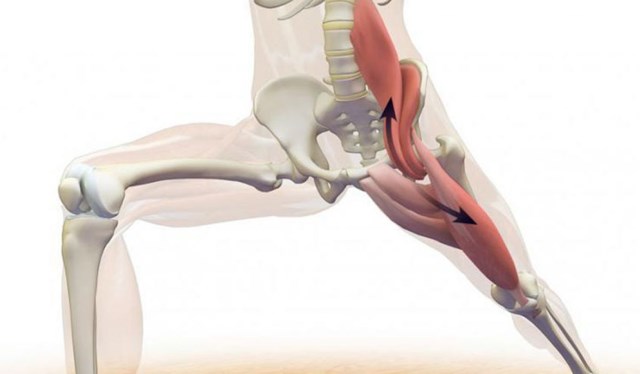In previous posts we have discussed which are the most appropriate exercises when it comes to stretching the iliopsoas muscle. However, like everything in life, there are two ways to do it, one of them is good and the other is bad. Throughout this post we will point out how not to stretch the iliopsoas before any activity such as a physiotherapy routine. As well as pointing out what are the most common mistakes when stretching this muscle, as well as its consequences. Although there is a lot of material to cut with this topic, we are going to explain again what this muscle is and where it is located in our body.

The iliopsoas can easily become the most important muscle in our body (or so we think). At least in terms of physical therapy. This muscle is located in an area where it influences many delicate areas of the neck. Being located in our pelvis, the iliac psoas affects:
- The lumbar.
- The hip.
- Pelvis.
- the diaphragm.
That is why this muscle is the center to be taken into consideration in many therapies. Not stretching the iliopsoas correctly can lead to endless problems, in each of the areas that we have discussed. That is why below we will reveal to you which are the mistakes he makes the most in his stretching.
How not to stretch the iliopsoas: Most common mistakes.
Although stretching a muscle may seem like a simple task (and in fact it is with most muscles). In the case of the iliopsoas it turns out to be a slightly more delicate task. Since the compensations and traps that can be generated when the iliopsoas stretches are usually not taken into account. It is common to see yourself making mistakes like the following:
When it comes to leading the knee and foot do the rear. In favor of extending the hip and leaning on the ball of the foot. And when trying to advance the other leg by flexing the hips and knees (This is the common stretch). However, this stretching generates a tension in the pelvis, to the ante version with lumbar hyper lordosis. Or even causing a lumbar rotation.
This hyper lordosis becomes more prominent when the brain is thrown further back. It is therefore essential to always go to a trusted physiotherapist who can provide the correct instructions for therapy. Or failing that, if some type of injury has been caused by not stretching the iliopsoas correctly. The professional will be in charge of providing a much more adequate orientation.
As if the iliopsoas should be stretched?
Although the focus of this post is on teaching how not to stretch the iliopsoas. So that you do not leave with doubt, we will also discuss what is the correct way to stretch this muscle. For this, the following points should only be taken into consideration:
- The first thing is to find the base position, for this we must place ourselves on the edge of a bed or some surface on which to lie down and take one of our legs back. And the other will be placed towards the front, being more precise that our knee touches the chest.
- The difference is that the rear leg will not be carried so far back (otherwise it can cause the previously mentioned damage). What we will try is to carry out a retroversion of the pelvis, with reduction of the lumbar lordosis.
- Remember that as you perform this stretch, especially as you compress the knee into flexion, you will find yourself stretching the posterior rectus quadriceps. Which is responsible for performing functions similar to the psoas.
If the syndications given in this list are taken into account. The proper stretching of the iliac psoas will be achieved. We even recommend looking for some videos if necessary, since this is the most common type of stretching for this muscle.
Without further ado, we hope that the information shared in this article will be of great use and benefit to you. But above all you have been able to learn how not to stretch the iliopsoas so as not to cause any kind of damage during the stretch.
We can only recommend two things to finish, the first is to always go to a physiotherapist, since the guidance and advice of a specialist will always be infinitely better than something taken from the internet.










